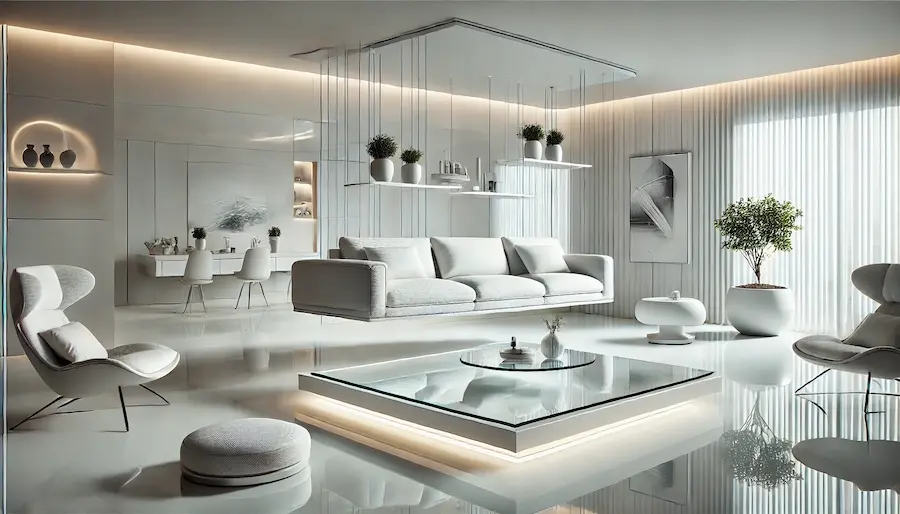Designing a living room with floating furniture can create an open, airy, and modern aesthetic. Here’s a comprehensive guide to understanding and implementing this design concept:
Introduction to Floating Furniture Living Rooms
Floating furniture refers to pieces that are positioned away from walls, often centered within the room, creating the illusion of more space and promoting better flow. This arrangement encourages intimate conversation areas and can make a room feel more inviting.
History and Origins of Floating Furniture Design
The concept of floating furniture gained popularity with open-plan living spaces, where defining distinct areas without the use of walls became essential. Designers began placing furniture away from walls to create functional zones within larger rooms, enhancing both aesthetics and utility.
Key Features of Floating Furniture Living Rooms
- Open Layouts: By positioning furniture away from walls, you create a more open and flexible layout that can adapt to various activities.
- Defined Zones: Floating furniture helps delineate different functional areas within a single space, such as separating the living area from the dining area in an open-concept home.
- Improved Traffic Flow: This arrangement facilitates better movement throughout the room, preventing congestion and making the space feel more accessible.
- Enhanced Intimacy: Floating seating arrangements can create cozy conversation areas, making large rooms feel more intimate.
Applications of Floating Furniture in Living Room Design
- Sofa Placement: Positioning the sofa in the center of the room, perhaps facing a focal point like a fireplace or TV, can anchor the space effectively.
- Rug Usage: Placing an area rug under the floating furniture grouping can help define the space and add cohesion to the arrangement.
- Multi-Functional Spaces: In open-plan designs, floating furniture can separate different areas without the need for walls, maintaining a sense of openness while providing functional distinctions.
Considerations When Designing a Floating Furniture Living Room
- Scale and Proportion: Ensure that the size of the furniture is appropriate for the room to maintain balance and harmony.
- Traffic Flow: Leave sufficient space between pieces to allow for easy movement and prevent the area from feeling cramped.
- Focal Points: Arrange furniture to highlight focal points in the room, such as a fireplace, artwork, or a view.
- Lighting: Incorporate adequate lighting to enhance the ambiance and functionality of the space, especially if the floating arrangement alters the room’s original lighting scheme.
Conclusion
Incorporating floating furniture into your living room design can enhance the sense of space, improve flow, and create inviting areas for relaxation and socialization. By thoughtfully arranging furniture away from walls, you can achieve a modern and functional living environment that adapts to your lifestyle needs.
